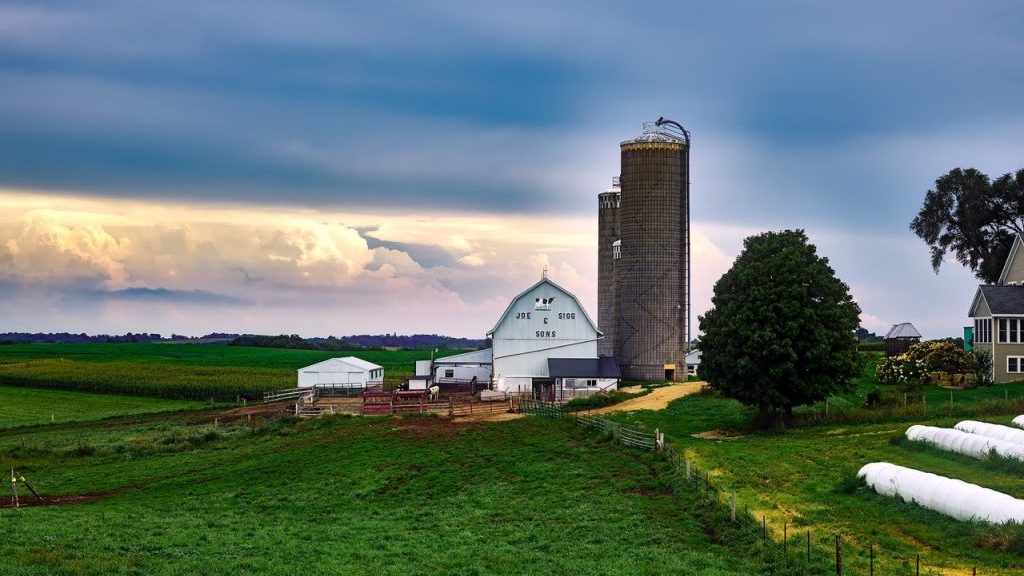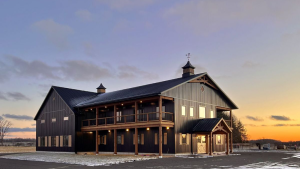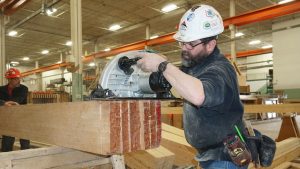The durability of pressure-treated wood continues to be a subject of strong debate among Ontario farm builders as Wood Preservation Canada (WPC) attempts to provide clarity on the issue through a new guidebook and the launch of a webinar series.
WPC, WoodWORKS! and FPInnovations will host a webinar titled Wood Preservation: The Importance of Proper Specification on Feb. 2, with more to be announced. The guide is titled Pressure Treated Structural Barn Posts — A Specifier’s Guide.
Two former Canadian Farm Builders Association (CFBA) presidents, Gary van Bolderen and Will Teron, first raised the issue last fall after van Bolderen discovered that three pressure-treated posts installed just 12 years earlier to support the roof truss system of a former client’s farm structure had rotted, causing the building to shift.
Subsequent investigation found the problem was widespread and stemmed in part from suppliers and farm builders not distinguishing between wood treated for farm uses versus residential uses.
The issue with premature deterioration of pressure treated posts is real and widespread
— Will Teron
Tacoma Engineers
“WPC’s members have taken great strides to provide information and resources on this topic,” stated WPC executive director Natalie Tarini. “We’re also hoping to partner with the Canadian Wood Council to explore what possible resources we could co-develop to highlight the importance of proper specification and applications.”
The CFBA has launched a task force to investigate the matter. Task force co-chair Wayne Blenkhorn explained that the issue stems from a decision two decades ago to withdraw certain stocks of pressure-treated product from the Ontario market because of cancer fears. Ontario lumber yards stopped stocking the premium treated wood, leaving farm builders with access to products that Blenkhorn has determined do not have the durability of the previous stocks.
The CFBA task force has sent out a questionnaire for its members with Blenkhorn expecting responses back by the end of January.
In the meantime Teron, an engineer, has continued to send emails to members of the CFBA and others with updates.
He wrote, “The issue with premature deterioration of pressure treated posts is real and widespread, confirmed through research/survey. This opinion is shared by many stakeholders that I have been talking with including lumber-industry experts, lumber yards, specifiers including engineers, building officials, builders and owners.”
Referring to the WPC guide, Teron wrote, “This guide now clarifies that there is a significant difference between wood treated for residential use and wood treated for commercial and agricultural use. In my simplified words, timbers available from retail lumber suppliers are not suitable for use in farm buildings.”
Teron told the Daily Commercial News he believes the WPC guide and planned education series are “moves in the right direction.”
But, he added, ambiguities remain including the fact that Canadian Standards Association (CSA) standards are not clear on what level of treatment is required for each application, and the guide does not clarify the situation.
Teron outlined three issues including the lack of clarity over the terminology of the various wood standards, the need for better education — “making it very clear to all users that there are significant differences between wood posts specified for residential decks and large farm buildings” — and product availability. Farm-grade wood is not available in many markets which too often leads to substandard materials being provided, Teron said.
The specifier’s guide lists four suppliers of structural barn posts in Ontario, none in Manitoba and one in Quebec.
Tarini noted the CSA 080 Technical Committee has made it an action item to look at terminology to see if there’s a possibility to offer clarity in some areas.
“As with any building-product-related question, when in doubt it’s best to seek the advice of a professional, such as a structural engineer,” she said.
Tarini said the WPC has included a checklist of questions in the specifiers guide because there is no definitive answer to what types of wood should be used on a specific project. Each project will have a different set of variables.
Webinar themes will include wood preservatives and their regulation in Canada — by the Pest Management Regulatory Agency; an overview of preservative treatment processes; the standardization of preserved wood in CSA 080; residential versus industrial applications; and performance of preserved wood products.
Teron stated that progress is being made on the various issues with the CFBA, WPC, CSA, the Ontario Building Officials Association and the Canadian Wood Council all participating in discussions.
“That said and from my personal perspective, we have a long way to go if we are going to solve the issues,” he said.
“In the interim, we (Tacoma Engineers) and numerous other engineers and builders have put a moratorium on specifying and installing wood posts with in-ground exposure. Until the appropriate specifications are defined, durability assured and supply available, we have no practical choice than to use alternative solutions.”
Follow the author on Twitter @DonWall_DCN.







Recent Comments
comments for this post are closed